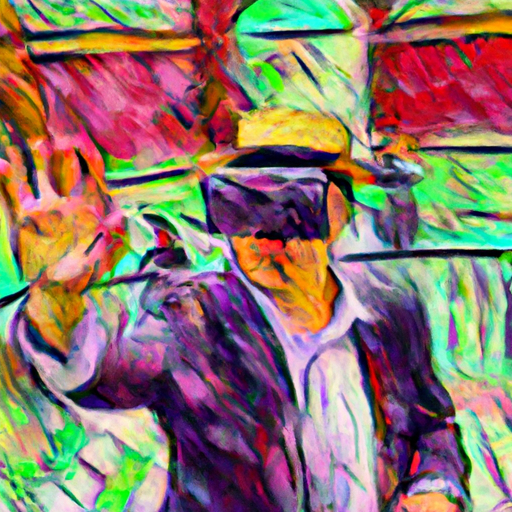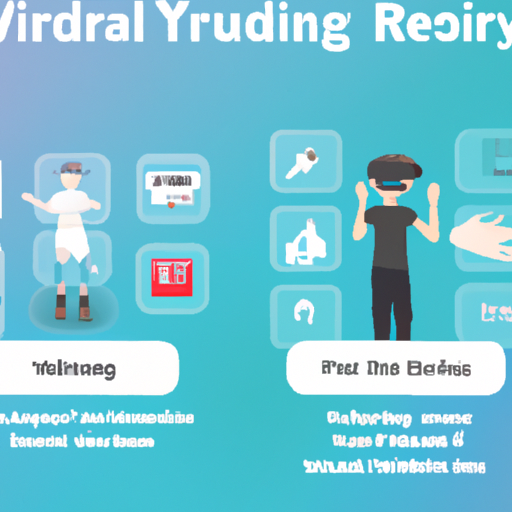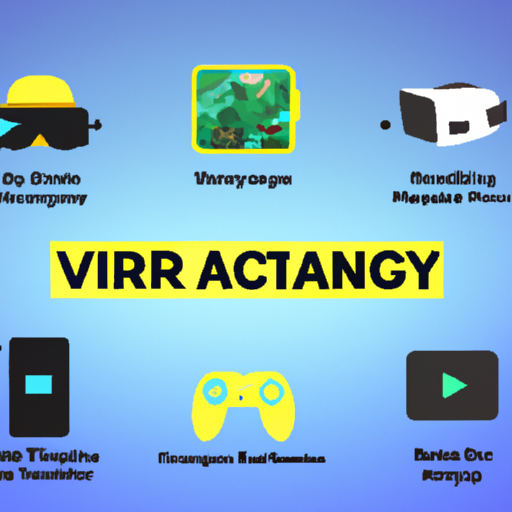-
Table of Contents
“Bringing your brand to life with VR/AR: the future of marketing and advertising.”
Introduction
Virtual Reality (VR) and Augmented Reality (AR) are rapidly becoming popular tools for marketing and advertising. These technologies are transforming the way businesses interact with their customers, allowing them to create immersive experiences that engage and excite. VR and AR can be used to create interactive experiences that allow customers to explore products and services in a virtual environment, while AR can be used to overlay digital content onto the real world. By leveraging these technologies, businesses can create engaging and memorable experiences that drive customer loyalty and increase sales.
The Impact of VR/AR on Digital Advertising Strategies
The emergence of virtual reality (VR) and augmented reality (AR) technologies has revolutionized the digital advertising landscape. These technologies have enabled advertisers to create immersive experiences that engage consumers in ways that were previously impossible. As a result, digital advertising strategies must be adapted to take advantage of the opportunities that VR and AR offer.
One of the most significant benefits of VR and AR is the ability to create highly personalized experiences. By leveraging data about a user’s preferences and interests, advertisers can create tailored experiences that are more likely to engage the user. This can be done through the use of interactive elements such as 3D models, 360-degree videos, and interactive games. Additionally, VR and AR can be used to create immersive environments that allow users to explore products and services in a more engaging way.
Another advantage of VR and AR is the ability to measure the effectiveness of campaigns in real-time. By tracking user engagement and behavior, advertisers can quickly identify which elements of their campaigns are working and which are not. This allows them to make adjustments to their campaigns in order to maximize their return on investment.
Finally, VR and AR can be used to create more engaging and memorable experiences. By leveraging the power of these technologies, advertisers can create experiences that are more likely to be remembered by users. This can lead to increased brand recognition and loyalty, which can ultimately lead to increased sales.
In conclusion, VR and AR technologies have the potential to revolutionize the digital advertising landscape. By leveraging the power of these technologies, advertisers can create highly personalized experiences that engage users in ways that were previously impossible. Additionally, these technologies can be used to measure the effectiveness of campaigns in real-time and create more engaging and memorable experiences. As a result, digital advertising strategies must be adapted to take advantage of the opportunities that VR and AR offer.
Leveraging VR/AR to Create Immersive Experiences for Customers
The use of virtual reality (VR) and augmented reality (AR) technologies has revolutionized the way businesses interact with their customers. By leveraging these technologies, businesses can create immersive experiences that engage customers in ways that were previously impossible.
VR and AR technologies allow businesses to create virtual environments that customers can explore and interact with. This allows customers to experience products and services in a way that is more engaging and immersive than traditional methods. For example, a furniture store could create a virtual showroom that customers can explore and interact with. This would allow customers to get a better sense of the furniture before making a purchase.
In addition to creating virtual environments, businesses can also use VR and AR technologies to create interactive experiences. For example, a restaurant could create an interactive game that customers can play while waiting for their food. This would help to keep customers engaged and entertained while they wait.
Finally, businesses can use VR and AR technologies to create personalized experiences for customers. For example, a clothing store could create a virtual dressing room that customers can use to try on clothes. This would allow customers to get a better sense of how the clothes look on them before making a purchase.
In conclusion, businesses can leverage VR and AR technologies to create immersive experiences for customers. These technologies allow businesses to create virtual environments, interactive experiences, and personalized experiences that engage customers in ways that were previously impossible. By leveraging these technologies, businesses can create experiences that will help to increase customer satisfaction and loyalty.
Exploring the Benefits of VR/AR for Advertising and Branding
The use of virtual reality (VR) and augmented reality (AR) in advertising and branding is becoming increasingly popular, and for good reason. These technologies offer a unique and immersive experience that can be used to engage customers and create a lasting impression. By leveraging the power of VR and AR, businesses can create a more interactive and engaging experience for their customers, allowing them to explore products and services in a more immersive way.
One of the primary benefits of using VR and AR for advertising and branding is the ability to create a more immersive experience. By using these technologies, businesses can create a virtual environment that allows customers to explore products and services in a more interactive way. This can be used to create a more engaging experience for customers, allowing them to explore products and services in a more interactive way. Additionally, businesses can use VR and AR to create a more personalized experience for customers, allowing them to customize their experience based on their preferences.
Another benefit of using VR and AR for advertising and branding is the ability to create a more engaging and memorable experience. By using these technologies, businesses can create a more interactive and engaging experience for customers, allowing them to explore products and services in a more immersive way. Additionally, businesses can use VR and AR to create a more personalized experience for customers, allowing them to customize their experience based on their preferences. This can be used to create a more memorable experience for customers, allowing them to remember the brand and its products and services more easily.
Finally, businesses can use VR and AR to create a more cost-effective advertising and branding experience. By using these technologies, businesses can create a more immersive experience for customers without having to invest in expensive physical advertising campaigns. Additionally, businesses can use VR and AR to create a more personalized experience for customers, allowing them to customize their experience based on their preferences. This can be used to create a more cost-effective advertising and branding experience, allowing businesses to reach more customers without having to invest in expensive physical advertising campaigns.
In conclusion, the use of VR and AR for advertising and branding offers a unique and immersive experience that can be used to engage customers and create a lasting impression. By leveraging the power of VR and AR, businesses can create a more interactive and engaging experience for their customers, allowing them to explore products and services in a more immersive way. Additionally, businesses can use VR and AR to create a more personalized experience for customers, allowing them to customize their experience based on their preferences. Finally, businesses can use VR and AR to create a more cost-effective advertising and branding experience, allowing them to reach more customers without having to invest in expensive physical advertising campaigns.
How VR/AR is Changing the Way Brands Connect with Consumers
The advent of virtual reality (VR) and augmented reality (AR) technologies has revolutionized the way brands connect with consumers. These technologies have enabled brands to create immersive experiences that engage consumers in ways that were previously unimaginable. By leveraging the power of VR and AR, brands can create interactive experiences that allow consumers to engage with their products and services in a more meaningful way.
One of the most significant ways that VR and AR are changing the way brands connect with consumers is through the use of immersive experiences. By utilizing VR and AR, brands can create virtual environments that allow consumers to interact with their products and services in a more engaging and realistic way. This allows brands to create experiences that are more engaging and memorable than traditional marketing methods. For example, a brand could create a virtual store where consumers can explore products and services in a realistic environment. This type of experience allows consumers to get a better understanding of the product or service and can help to create a more positive brand image.
Another way that VR and AR are changing the way brands connect with consumers is through the use of interactive experiences. By utilizing VR and AR, brands can create interactive experiences that allow consumers to interact with their products and services in a more engaging and meaningful way. For example, a brand could create a virtual reality game that allows consumers to explore a product or service in a more interactive way. This type of experience can help to create a more positive brand image and can help to increase customer loyalty.
Finally, VR and AR are also changing the way brands connect with consumers by allowing them to create more personalized experiences. By utilizing VR and AR, brands can create experiences that are tailored to the individual consumer. This allows brands to create experiences that are more engaging and memorable than traditional marketing methods. For example, a brand could create a virtual reality experience that allows consumers to explore a product or service in a more personalized way. This type of experience can help to create a more positive brand image and can help to increase customer loyalty.
In conclusion, VR and AR are changing the way brands connect with consumers in a variety of ways. By utilizing these technologies, brands can create immersive experiences that engage consumers in ways that were previously unimaginable. Additionally, brands can create interactive experiences that allow consumers to interact with their products and services in a more meaningful way. Finally, brands can create more personalized experiences that are tailored to the individual consumer. All of these factors are helping to create a more positive brand image and are helping to increase customer loyalty.
Conclusion
VR/AR in marketing and advertising is a powerful tool that can be used to create immersive experiences for customers and to engage them in a way that traditional marketing and advertising cannot. It can be used to create interactive experiences that can help to increase brand awareness and loyalty, as well as to create more engaging and memorable experiences for customers. As technology continues to evolve, VR/AR will become an increasingly important part of the marketing and advertising landscape, and companies should take advantage of this technology to create more engaging and effective campaigns.




